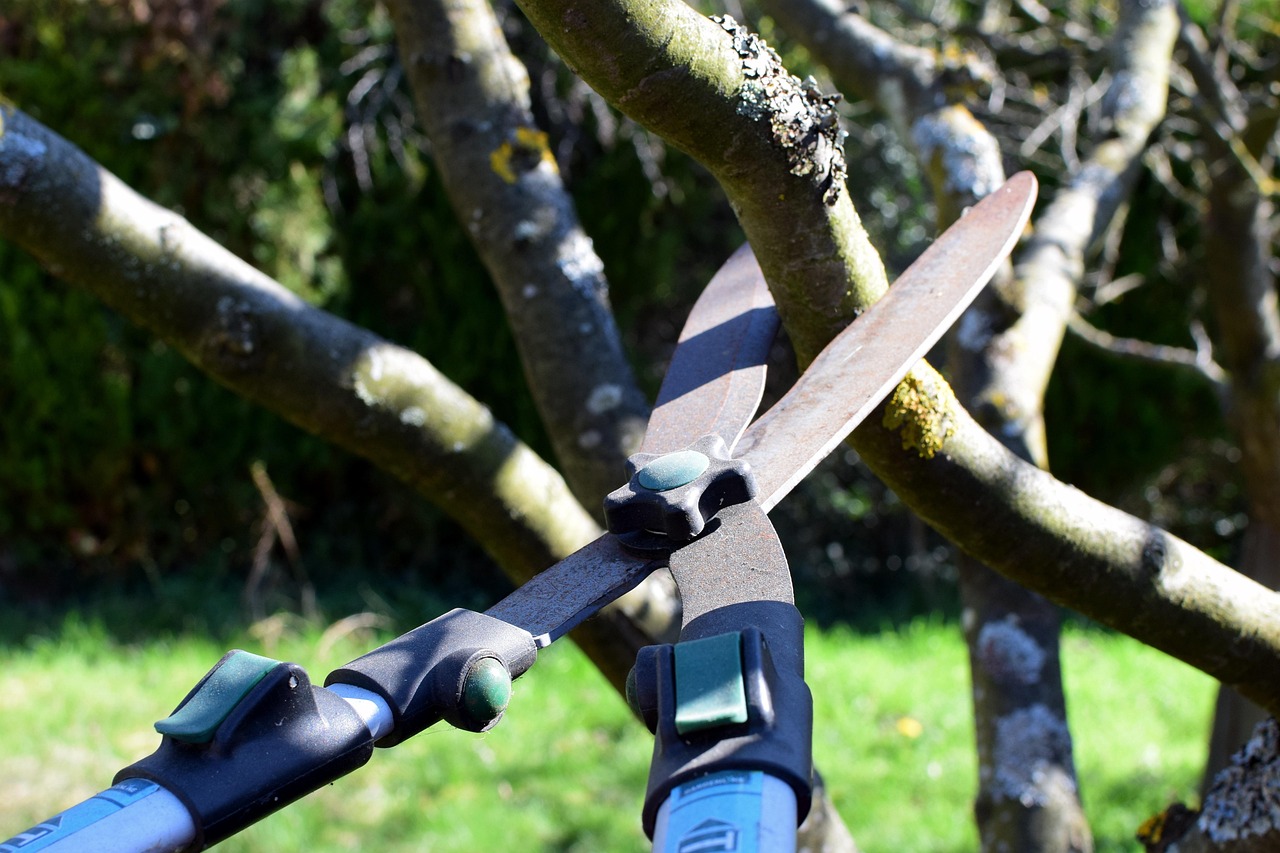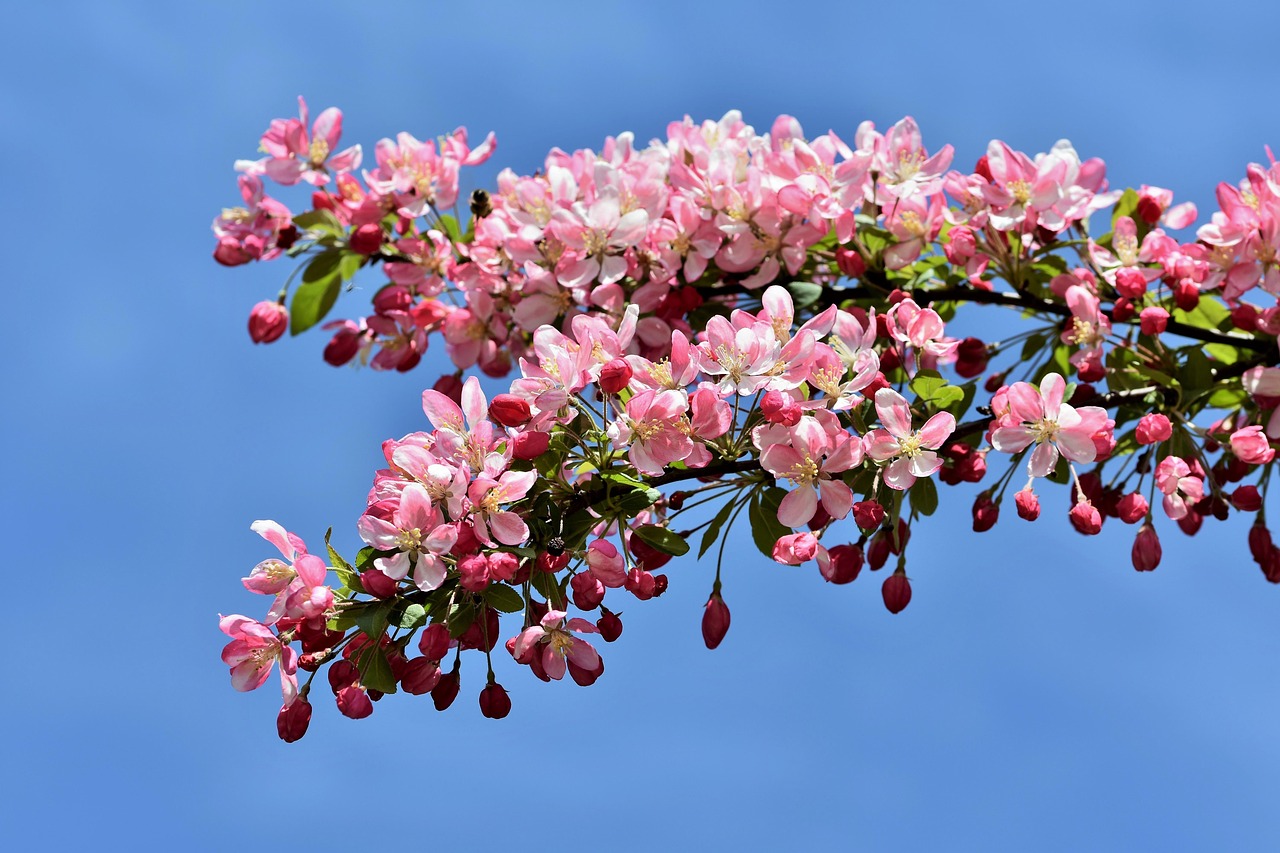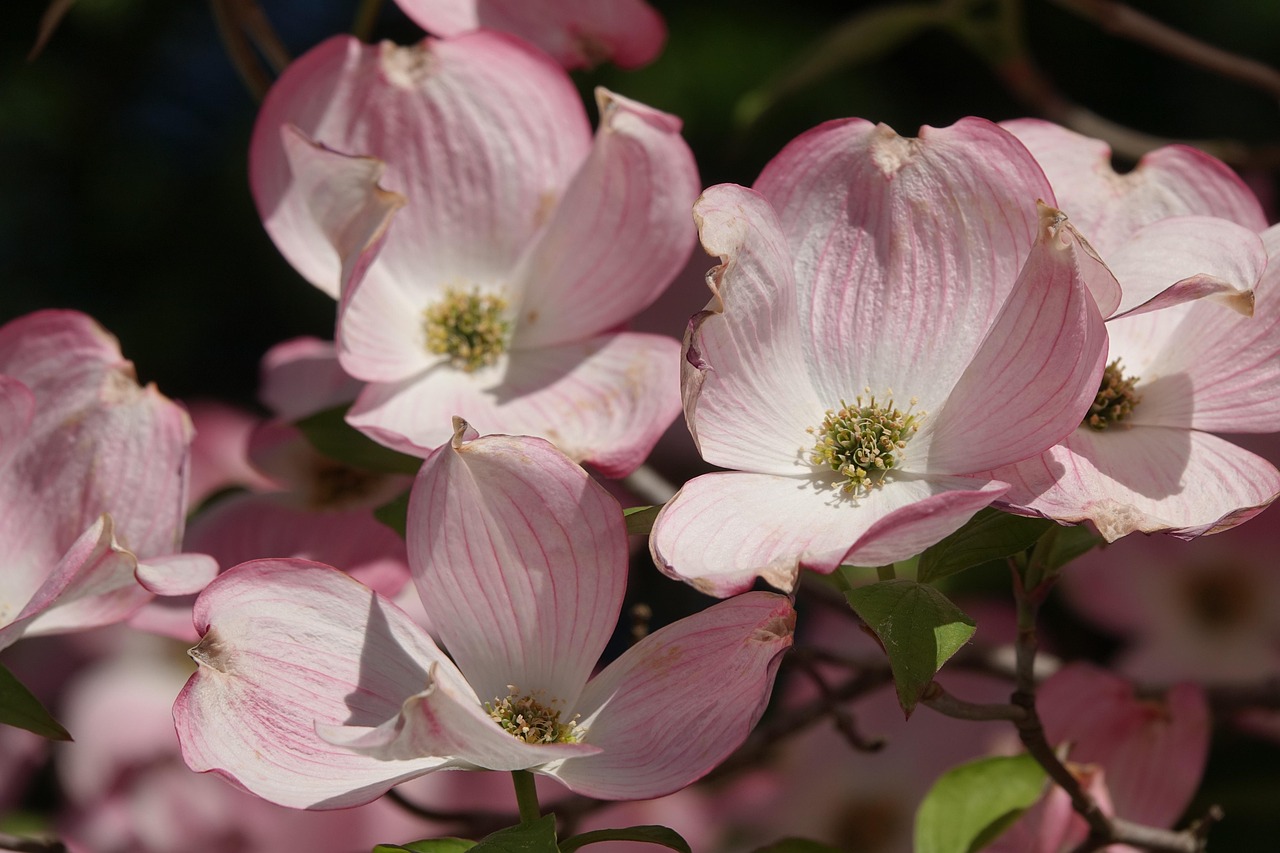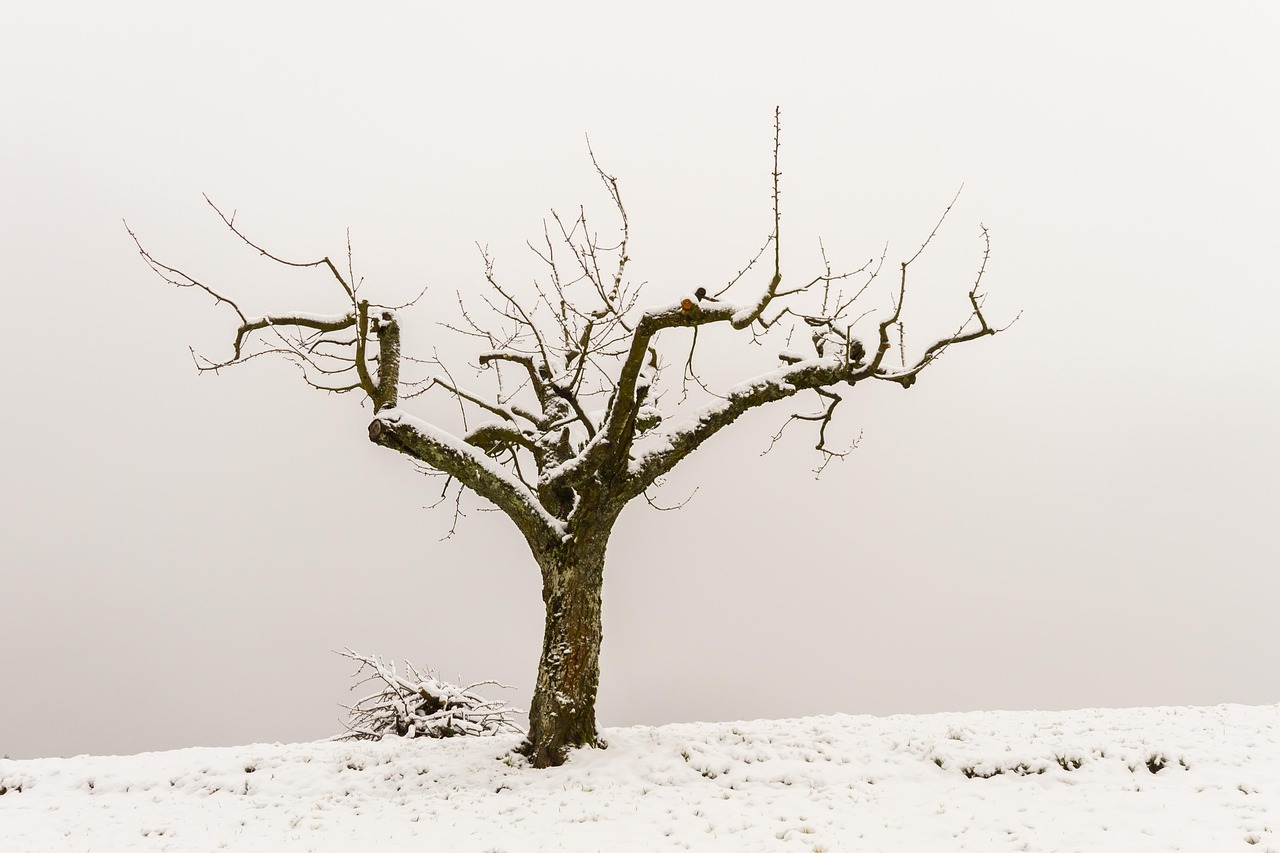Pruning crabapple trees effectively can enhance pollinator activity by improving tree health, increasing flower production, and creating an inviting habitat. Proper techniques help maintain the tree’s structure and encourage vibrant blossoms, attracting bees and other pollinators.
Crabapple trees are cherished for their stunning spring blossoms and vibrant fall foliage. They are not only beautiful but also serve an important ecological role. These trees provide essential resources for pollinators, particularly bees, which are crucial for a healthy ecosystem. When pruned correctly, crabapple trees can produce more flowers and fruit, enhancing their appeal to these beneficial insects.

Understanding the importance of pruning is vital for any gardener aiming to support pollinators. Pruning not only shapes the tree but also improves air circulation and light exposure, both of which are critical for flower and fruit development. This section will explore effective pruning techniques, the best times to prune, and the overall impact of pruning on pollinator activity.
Importance of Pollinators
Pollinators play a significant role in the reproduction of many flowering plants. They help in transferring pollen from one flower to another, which is essential for fruit and seed production. This natural process supports biodiversity and contributes to food security.
Here are some key facts about pollinators:

| Fact | Details |
|---|---|
| Variety of Pollinators | Bees, butterflies, birds, and bats are all important pollinators. |
| Economic Impact | Pollination contributes to approximately $20 billion in U.S. crop production. |
| Threats to Pollinators | Habitat loss, pesticides, and climate change have significantly reduced pollinator populations. |
The decline in pollinator populations has raised concerns about the health of ecosystems and food production systems. As gardeners and tree owners, we can take steps to create environments that support these essential creatures. Pruning crabapple trees is one such step that can greatly enhance their role as a pollinator-friendly plant.
When to Prune Crabapple Trees
The timing of pruning is crucial for the health of crabapple trees. The best time to prune is during the dormant season, typically late winter or early spring, just before new growth begins. This timing minimizes stress on the tree and encourages vigorous growth in the spring.
Pruning during the dormant season also allows for better visibility of the tree’s structure. Gardeners can easily identify dead or diseased branches without the distraction of leaves. Additionally, pruning after flowering can remove spent blooms but may limit flower production for the following year.

Techniques for Pruning Crabapple Trees
To successfully prune crabapple trees and promote pollinator activity, follow these recommended techniques:
- Remove Dead or Diseased Wood: Start by cutting away any dead or unhealthy branches. This helps prevent the spread of disease and encourages healthy growth.
- Thin Out Crowded Areas: Selectively remove branches that cross each other or grow inward. This improves air circulation and light penetration, which is vital for flower production.
- Maintain Structure: Aim to keep a balanced shape by trimming back long or overly vigorous branches. A well-structured tree will support more flowers.
- Avoid Over-Pruning: While it may be tempting to prune extensively, removing too much foliage can stress the tree and reduce flowering.
Each cut should be made with precision. Use sharp pruning shears to minimize damage to the tree. Proper cuts will heal more quickly and help keep the tree healthy.
The Impact of Pruning on Flower Production
Pruning can significantly influence the flowering capacity of crabapple trees. By removing excess wood, gardeners can encourage more vigorous growth of new shoots where flowers develop. Healthy trees tend to produce more blooms, which directly benefits pollinators.

A well-pruned crabapple tree not only supports pollinators but also enhances the overall landscape. The colorful flowers attract bees in early spring, providing them with a vital food source when other plants have yet to bloom. This early availability of pollen and nectar is especially important for bee populations emerging from winter dormancy.
In summary, proper pruning practices for crabapple trees can substantially boost their health and flower production, creating an inviting environment for pollinators. Understanding when and how to prune is essential for maximizing these benefits.
Pruning Techniques for Healthy Growth
Effective pruning techniques are essential for maintaining the health and vitality of crabapple trees. Each technique serves a specific purpose in promoting growth and ensuring that the tree remains attractive to pollinators. This section will explore various pruning methods, focusing on their benefits and how they can be applied to enhance both tree health and pollinator activity.
Types of Pruning Techniques
There are several key pruning techniques that gardeners can employ when caring for crabapple trees. Understanding each method is crucial for achieving optimal results.
- Thinning: This technique involves removing entire branches to improve light penetration and air circulation. Thinning allows sunlight to reach more parts of the tree, promoting healthier foliage and more flowers.
- Heading: Heading is the process of cutting back a portion of a branch, which encourages new growth. This technique can help shape the tree while allowing for dense flower production.
- Cleaning: Cleaning focuses on removing dead, damaged, or diseased wood. This practice helps prevent disease spread and ensures that the tree can devote its energy to healthy growth.
- Reduction: Reduction pruning is used to decrease the size of the tree while maintaining its natural shape. This method is particularly helpful for larger trees that may overshadow other plants in the garden.
Step-by-Step Pruning Process
To effectively prune a crabapple tree, follow these step-by-step guidelines:
- Gather Tools: Ensure you have the right tools, including sharp pruning shears, loppers, and possibly a saw for larger branches.
- Assess the Tree: Before making any cuts, take a moment to evaluate the tree’s structure. Look for dead or crossing branches and areas that may need thinning.
- Start with Dead Wood: Begin by removing any dead or diseased branches. Make cuts at a 45-degree angle to encourage healing.
- Thin Out Crowded Areas: Identify branches that are too close together or crossing each other. Carefully prune these areas to improve airflow.
- Shape the Tree: Use heading cuts to shape the tree and encourage new growth. Aim to maintain a balanced form.
- Clean Up: Remove all pruned material from the base of the tree to prevent disease and pests.
When pruning, always remember to step back frequently to assess your work and ensure that you are maintaining a natural appearance for the tree.
The Benefits of Pruning for Pollinators
Pruning not only supports the health of crabapple trees but also has significant implications for pollinator activity. The following benefits highlight how effective pruning can create a more welcoming environment for these essential insects.
Increased Flower Production
As previously discussed, pruning helps stimulate new growth, which can lead to increased flower production. More flowers mean more nectar and pollen available for pollinators.
Improved Tree Health
A well-pruned tree is generally healthier. By removing dead or diseased wood, gardeners help prevent the spread of illness that can weaken the tree. Healthy trees attract more pollinators due to their vigorous blooms.
Enhanced Accessibility for Pollinators
Pruning can help create an open structure that allows pollinators easy access to flowers. This accessibility is crucial, especially for species like bees that prefer certain flower shapes and arrangements.
The Role of Crabapple Trees in Ecosystems
Crabapple trees serve as vital components of local ecosystems. Their role extends beyond providing food for pollinators; they also support a diverse range of wildlife.
Supporting Local Wildlife
The blooms of crabapple trees attract not only bees but also butterflies, birds, and other beneficial insects. Additionally, their fruits serve as food sources for various animals throughout the season.
- Birds: Many bird species feed on crabapple fruit, especially in late summer and fall.
- Beneficial Insects: The flowers attract insects that are not only pollinators but also predators of harmful pests.
- Mammals: Small mammals may also take advantage of fallen fruit during autumn months.
Biodiversity Enhancement
By planting and maintaining crabapple trees, gardeners contribute to biodiversity in their local areas. These trees can serve as host plants for various species, helping to sustain local ecosystems.
The presence of diverse flora supports healthy insect populations, which in turn benefits birds and other wildlife. Promoting biodiversity is crucial for achieving a balanced ecosystem where pollinators can thrive.
Caring for crabapple trees through proper pruning techniques is an investment in both tree health and ecosystem vitality. Understanding how to best manage these trees ensures that they continue to provide valuable resources for pollinators and other wildlife alike.
Seasonal Care and Maintenance of Crabapple Trees
Beyond pruning, seasonal care is essential for ensuring the health and vitality of crabapple trees. This section will detail various maintenance tasks that should be performed throughout the year to promote robust growth and enhance pollinator activity.
Spring Care
Spring is a critical time for crabapple trees as they emerge from dormancy. The following tasks should be undertaken during this season:
- Fertilization: Apply a balanced, slow-release fertilizer to provide essential nutrients. This encourages healthy growth and abundant flowering, which attracts pollinators.
- Mulching: Apply a layer of organic mulch around the base of the tree. Mulch helps retain moisture, suppress weeds, and regulate soil temperature.
- Pest Monitoring: Keep an eye out for common pests, such as aphids or spider mites. Early detection allows for effective control measures before populations can grow.
- Watering: Ensure the tree receives adequate moisture as it begins to leaf out. Newly planted trees may require regular watering until established.
Summer Care
During the summer months, maintaining crabapple trees involves a few key tasks:
- Watering: Continue to monitor soil moisture. Water deeply, especially during dry spells, to promote strong root development.
- Pest and Disease Management: Regularly inspect the tree for signs of pests or diseases. Use organic or chemical treatments as necessary, following manufacturer instructions.
- Pruning: Light summer pruning can be beneficial. Remove any dead or diseased branches that were missed during spring pruning.
- Deadheading: Remove spent flowers to encourage additional blooms and prevent the tree from wasting energy on seed production.
Autumn Care
As the growing season winds down, preparing crabapple trees for winter is essential:
- Fertilization: Consider applying a fall fertilizer to strengthen the tree before winter dormancy. This can enhance the tree’s resilience against cold temperatures.
- Pest Control: Inspect the tree for any lingering pests that may need treatment before winter.
- Watering: Ensure the tree is adequately watered before the ground freezes. Hydrated trees are more likely to withstand winter stress.
- Mulching: Add a fresh layer of mulch after the leaves have fallen. Mulch will help insulate the roots against freezing temperatures.
Winter Care
Winter care is often overlooked but is crucial for the health of crabapple trees. Consider these practices during the colder months:
- Protection from Frost: In particularly cold areas, consider wrapping younger trees with burlap to protect them from frost damage.
- Avoid Heavy Snow Accumulation: Gently brush off heavy snow accumulation from branches to prevent breakage.
- Pest Monitoring: Inspect for signs of pests that may become active during warmer winter days.
Nurturing Pollinator Habitats Around Crabapple Trees
Creating a supportive environment around crabapple trees can further enhance their attractiveness to pollinators. This section will discuss methods for nurturing nearby habitats.
Diversity in Planting
Incorporating a variety of plants can create a rich habitat for pollinators. Consider planting:
- Nectar-Rich Flowers: Choose flowers that bloom at different times throughout the growing season to provide continuous food sources.
- Natives Plants: Native species are well-suited to local ecosystems and often attract native pollinators.
- Ground Covers: Low-growing plants can help prevent soil erosion and provide additional habitats for beneficial insects.
Providing Water Sources
A reliable water source is essential for pollinators. You can create small water features or shallow dishes filled with stones and water for bees and other insects to drink safely.
Avoiding Pesticides
Minimizing or eliminating pesticide use is critical for protecting pollinator populations. If pest control is necessary, opt for organic solutions and apply them during times when pollinators are not active, such as early morning or late evening.
The Role of Education and Community Involvement
Education plays a vital role in promoting awareness about the importance of crabapple trees and their impact on pollinator activity. Engaging with local communities can foster a sense of responsibility towards maintaining these valuable trees.
Community Workshops and Events
Organizing community workshops focused on tree care, gardening practices, and pollinator support can empower individuals to take action. These events can cover topics such as:
- Proper Pruning Techniques: Teaching correct pruning methods fosters better tree health.
- Sustainable Gardening Practices: Encouraging eco-friendly practices helps protect local ecosystems.
- Pollinator Identification: Educating participants about local pollinator species can increase appreciation and protection efforts.
Collaborative Initiatives
Partnering with local schools, gardening clubs, and environmental organizations can amplify outreach efforts. Collaborative initiatives can include:
- Tree Planting Days: Organizing community tree planting events to increase crabapple and other beneficial tree populations.
- Pollinator Gardens: Creating community gardens that focus on attracting pollinators while also providing educational opportunities.
Cultivating a community that values crabapple trees and their role in promoting pollinator activity is essential for sustaining these vital ecosystems for future generations.
Enhancing Crabapple Tree Health through Integrated Practices
In addition to pruning, a holistic approach to the care of crabapple trees can significantly enhance their health and the benefits they provide to pollinators. Integrating various gardening practices will create an environment conducive to thriving ecosystems. This section will discuss additional methods and considerations for optimizing the growth and sustainability of crabapple trees.
Soil Health Management
Healthy soil is the foundation of any thriving landscape. To promote robust growth in crabapple trees, consider the following soil management practices:
- Soil Testing: Conduct soil tests to determine pH levels and nutrient content. Amendments can then be made based on the specific needs of the soil.
- Organic Matter Addition: Incorporate organic matter, such as compost, into the soil. This enhances soil structure, promotes beneficial microorganisms, and improves nutrient availability.
- Cover Crops: Planting cover crops during the off-season can help prevent erosion, suppress weeds, and improve soil fertility.
Companion Planting
Companion planting involves growing different plants together that can benefit one another. This practice can enhance the health of crabapple trees and attract more pollinators. Consider these companion plants:
- Lavender: Attracts bees and other beneficial insects while repelling certain pests.
- Marigolds: Known to deter harmful nematodes and aphids, marigolds can be planted nearby for added protection.
- Bee Balm: This flowering plant is highly attractive to bees and adds beauty to the garden.
Regular Monitoring and Record-Keeping
Keeping track of the health and growth of crabapple trees allows gardeners to make informed decisions regarding care practices. Regular monitoring should include:
- Pest and Disease Records: Documenting any pest sightings or disease occurrences can help identify patterns and prevent future issues.
- Growth Observations: Track growth rates, flowering times, and fruit production to assess tree health over time.
- Soil Condition Assessments: Regularly check soil moisture levels, pH, and texture to ensure optimal growing conditions.
Final Thoughts
Caring for crabapple trees through proper pruning and holistic management practices is an investment in both the tree’s health and the well-being of local pollinators. By understanding the importance of these trees in our ecosystems, gardeners can foster environments that support not only beautiful landscapes but also diverse wildlife.
Integrating seasonal care, enhancing soil health, and implementing companion planting techniques will create a thriving habitat for pollinators while ensuring that crabapple trees flourish. Community involvement and education further amplify these efforts, promoting awareness about the critical role that pollinators play in our ecosystems.
Ultimately, a commitment to nurturing crabapple trees and their surrounding environments is essential for sustaining healthy ecosystems. By taking proactive measures in tree care and community engagement, individuals can contribute significantly to the preservation of pollinator populations and biodiversity for generations to come.
As we continue to learn about the interdependencies within our gardens and landscapes, we become stewards of nature, fostering harmony between plants, animals, and humans. Through dedicated effort and mindful practices, we can ensure that crabapple trees remain a vital link in the chain of life that sustains our planet.
